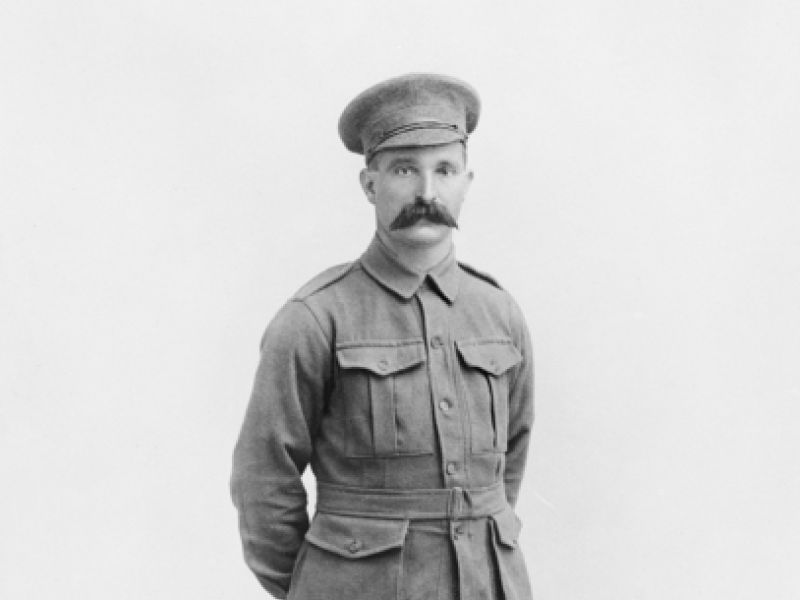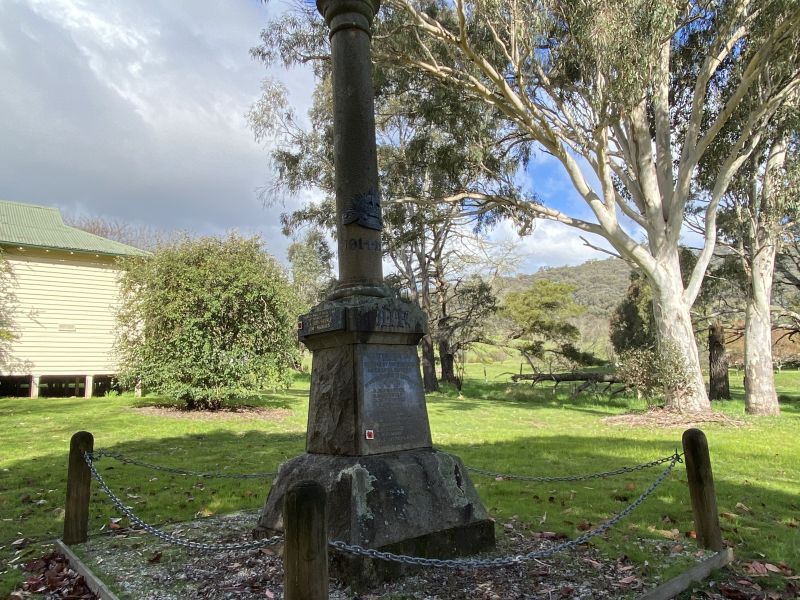Frederick Christian Miller
Friedrich Christian Müller was born in 1878 at Bethanga, Victoria. He was the forth of eight children to Johannes and Hannah (née Gosling) Müller.
The 1914 Electoral Roll indicates that Fred was working as a laborer and living at “Hilltop” on Koetong Rd. It wasn’t until Fred enlisted in July of 1915 that the family appeared to have anglicised their surname to Miller. He also noted on his enlistment papers that he was Church of England. This was possibly due to his mother’s influence who had been born in England as opposed to his father’s, who was German. It is also quite possible that Fred was fighting in France against some of his German cousins. He was a member of the Granya Rifle Club and won his certificate as a marksman on the 1st of August, 1908.
Fred was a single 37 year old miner when he enlisted at Melbourne on the 29th of July 1915. He was given the Regimental Number 3913 and placed into the 12th Reinforcements for the 5th Infantry Battalion. He embarked on HMAT A40 Ceramic on the 23rd of November, 1915, at Melbourne. By the time he disembarked in Egypt allied forces had withdrawn from the Gallipoli Peninsula.
During the next few months in Egypt, great change was happening to the 1st AIF. Existing battalions were split to form ‘pup’ battalions. There was often great angst from those who fought on Gallipoli at not wanting to leave their initial battalion. However, the AIF was undergoing a period of expansion and orders were orders. While this was happening, and training continued to fill up mst of the soldiers’ time, Fred was admitted twice to hospital to have some dental work done.
On the 22nd of February, 1916, Fred was taken on strength with the 5th Battalion. One month later the battalion embarked on the transport City of Chester and sailed to join the BEF in France. The battalion’s first major action in France was at Pozieres in the Somme valley in July of 1916. On the 25th of that month, Fred was wounded in action with a shrapnel wound to the neck. He was first taken to the local casualty clearing station before being sent to the 2nd Field Ambulance. A medical report of the wound states that it was a torn, ragged wound at the base of the neck with two major muscles on the right side being severed. Fred was taken to England onboard the Hospital Ship Glouster Castle and admitted to Graylingwell Hospital in Chichester, West Sussex. He would not rejoin his unit in France until the 16th of January the following year.
In early February the battalion was in the Bazentin sector south-east of Pozieres. On the 10th of that month four officers and 103 ORs (other ranks) it carried out a trench raid on a location known as Bayonet trench (see map below). The raiding party was held up by enemy wire and only one group succeeded in entering the enemy trenches. The battalion’s casualties were two officers wounded, eight ORs (other ranks) killed, forty wounded and two missing. Fred received a compound fracture to hs skull during the fighting and was admitted to the 1st Australian Field Ambulance. He was immediately transferred to the 1/1st South Midlands Casualty Clearing Station but died of his wounds on the 12th. The following day he was buried in the Communal Extension Cemetery (Plot 5, Row B, Grave No. 10) at Dernancourt, France.
Fred’s father passed away sometime during 1917 and although his mother was still alive, he chose to leave everything in his will to his younger sister Matilda who was married and living in Brunswick in Melbourne.
He is remembered on the Australian War Memorial Roll of Honour, and the Granya War Memorial where he is listed as F.C. Muller. For his service, he was awarded the British War Medal and the Victory Medal.

 Stephen Learmonth
Stephen Learmonth